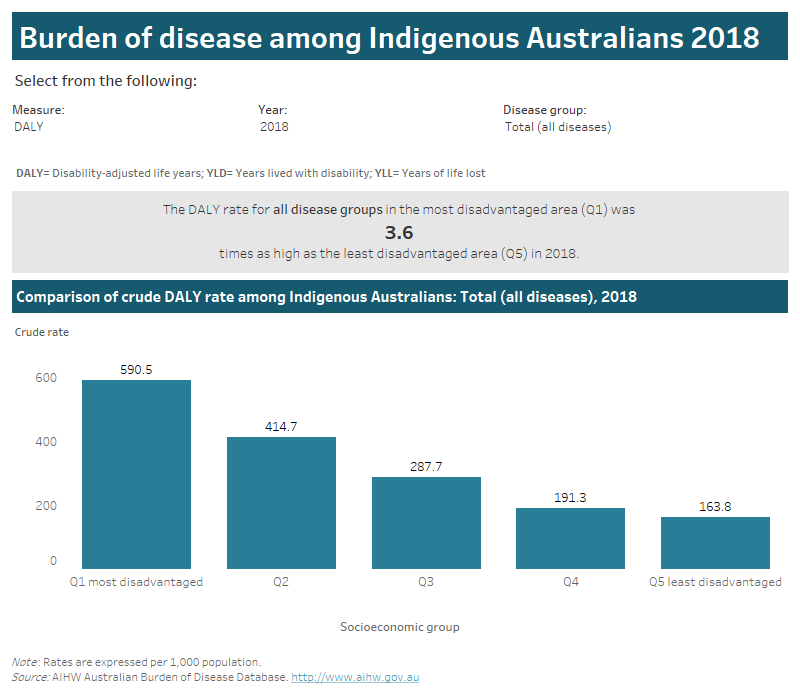Socioeconomic groups
This section focuses on the variability of burden across socioeconomic groups, rather than the detailed estimates for a particular socioeconomic category.
Disease burden among Aboriginal and Torres Strait Islander people was estimated by socioeconomic group for 2018 and 2011.
Indigenous burden estimates by socioeconomic group are based on an Indigenous-specific index of socioeconomic disadvantage: the 2016 Indigenous Relative Socioeconomic Outcomes (IRSEO) index. It reflects the level of socioeconomic disadvantage experienced by Indigenous Australians living in each Indigenous Area in Australia and incorporates 9 variables from the 2016 Census of Population and Housing that measure employment, occupation, education, income and housing (Biddle & Markham 2017). The analysis in this section divides the Indigenous population into ‘quintiles’ (fifths) of disadvantage, where the first quintile (Q1) represents the 20% of Indigenous Areas that have the lowest IRSEO index scores (those which experience the most disadvantage) and the fifth quintile (Q5) the 20% of areas with the highest scores (those which experience the least disadvantage).
Measures of the gap between Indigenous and non-Indigenous Australians are not presented as a comparable index for the non-Indigenous population is not available.
Use the interactive graph to explore the disease burden (DALY, YLD or YLL) among Indigenous Australians across socioeconomic groups by sex and disease group in 2011or 2018. Crude rates, rather than age-standardised rates, have been used as the socioeconomic index described here incorporates a population age-weighting which results in little difference in the age profile of the populations assigned to each quintile of socioeconomic disadvantage under the index.
See Chapter 10 in the Australian Burden of Disease Study 2018: impact and causes of illness and death in Aboriginal and Torres Strait Islander people report for more information on estimates by socioeconomic group.
This interactive data visualisation compares burden of disease among Indigenous Australians by quintiles (fifths) of relative socioeconomic disadvantage. The data visualisation has 2 sections. The first section has a sentence that reports how many times higher the rate was in the most disadvantaged areas compared with the least disadvantaged areas for the selected type of burden, year and disease group. The second section is a column graph which reports the crude rate of burden (per 1,000 population) for each socioeconomic group for the selected type of burden, year and disease group.

Please use the ‘Download’ button at the bottom of the dashboard to generate image or PDF versions of the data.


